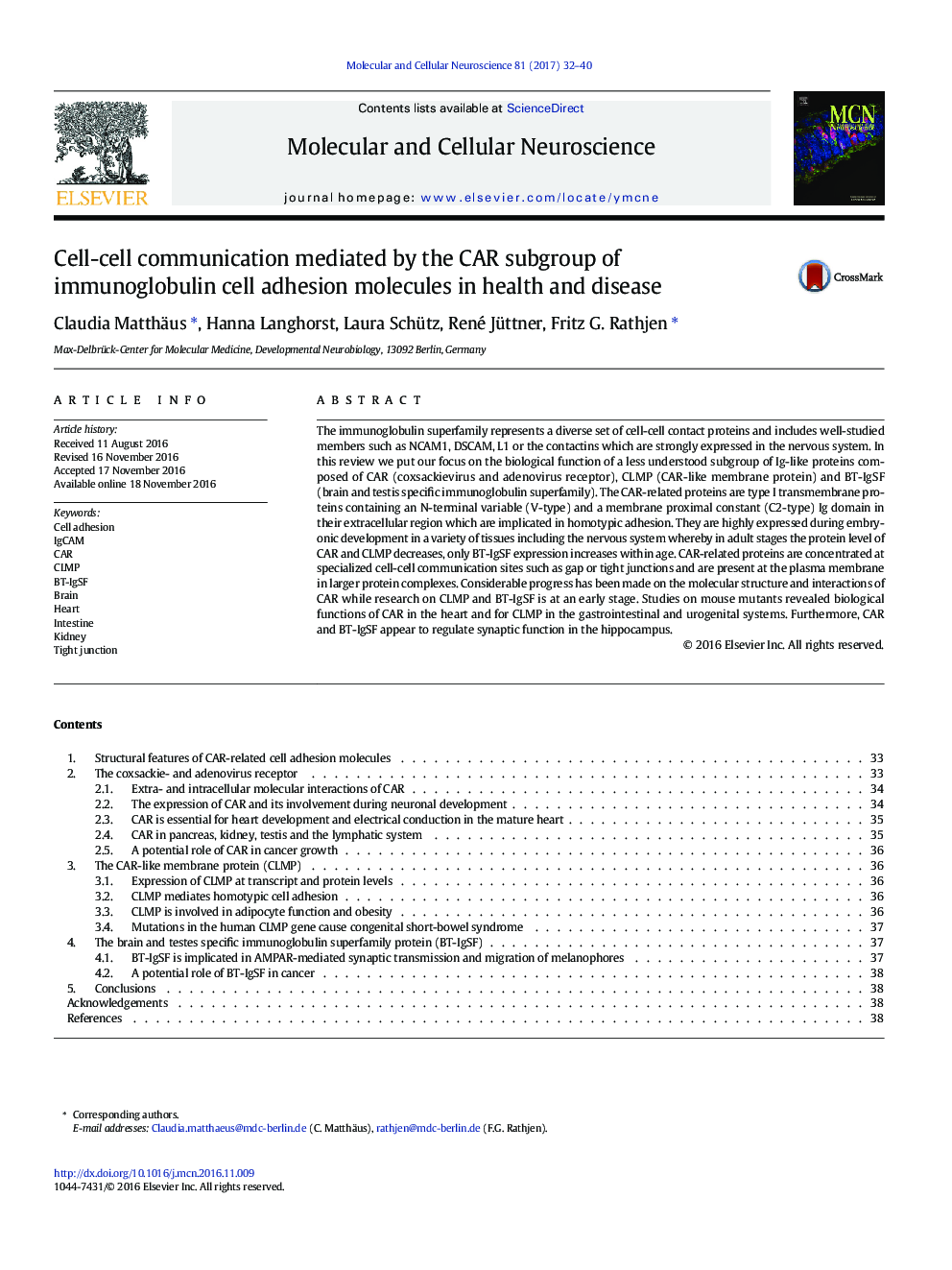| Article ID | Journal | Published Year | Pages | File Type |
|---|---|---|---|---|
| 5534367 | Molecular and Cellular Neuroscience | 2017 | 9 Pages |
Highlightâ¢Hereditary diseases in the absence of CAR-like cell adhesion moleculesâ¢Structural features of CAR-like proteins,â¢Molecular interactions of CAR-like proteins
The immunoglobulin superfamily represents a diverse set of cell-cell contact proteins and includes well-studied members such as NCAM1, DSCAM, L1 or the contactins which are strongly expressed in the nervous system. In this review we put our focus on the biological function of a less understood subgroup of Ig-like proteins composed of CAR (coxsackievirus and adenovirus receptor), CLMP (CAR-like membrane protein) and BT-IgSF (brain and testis specific immunoglobulin superfamily). The CAR-related proteins are type I transmembrane proteins containing an N-terminal variable (V-type) and a membrane proximal constant (C2-type) Ig domain in their extracellular region which are implicated in homotypic adhesion. They are highly expressed during embryonic development in a variety of tissues including the nervous system whereby in adult stages the protein level of CAR and CLMP decreases, only BT-IgSF expression increases within age. CAR-related proteins are concentrated at specialized cell-cell communication sites such as gap or tight junctions and are present at the plasma membrane in larger protein complexes. Considerable progress has been made on the molecular structure and interactions of CAR while research on CLMP and BT-IgSF is at an early stage. Studies on mouse mutants revealed biological functions of CAR in the heart and for CLMP in the gastrointestinal and urogenital systems. Furthermore, CAR and BT-IgSF appear to regulate synaptic function in the hippocampus.
Graphical abstractDownload high-res image (115KB)Download full-size image
